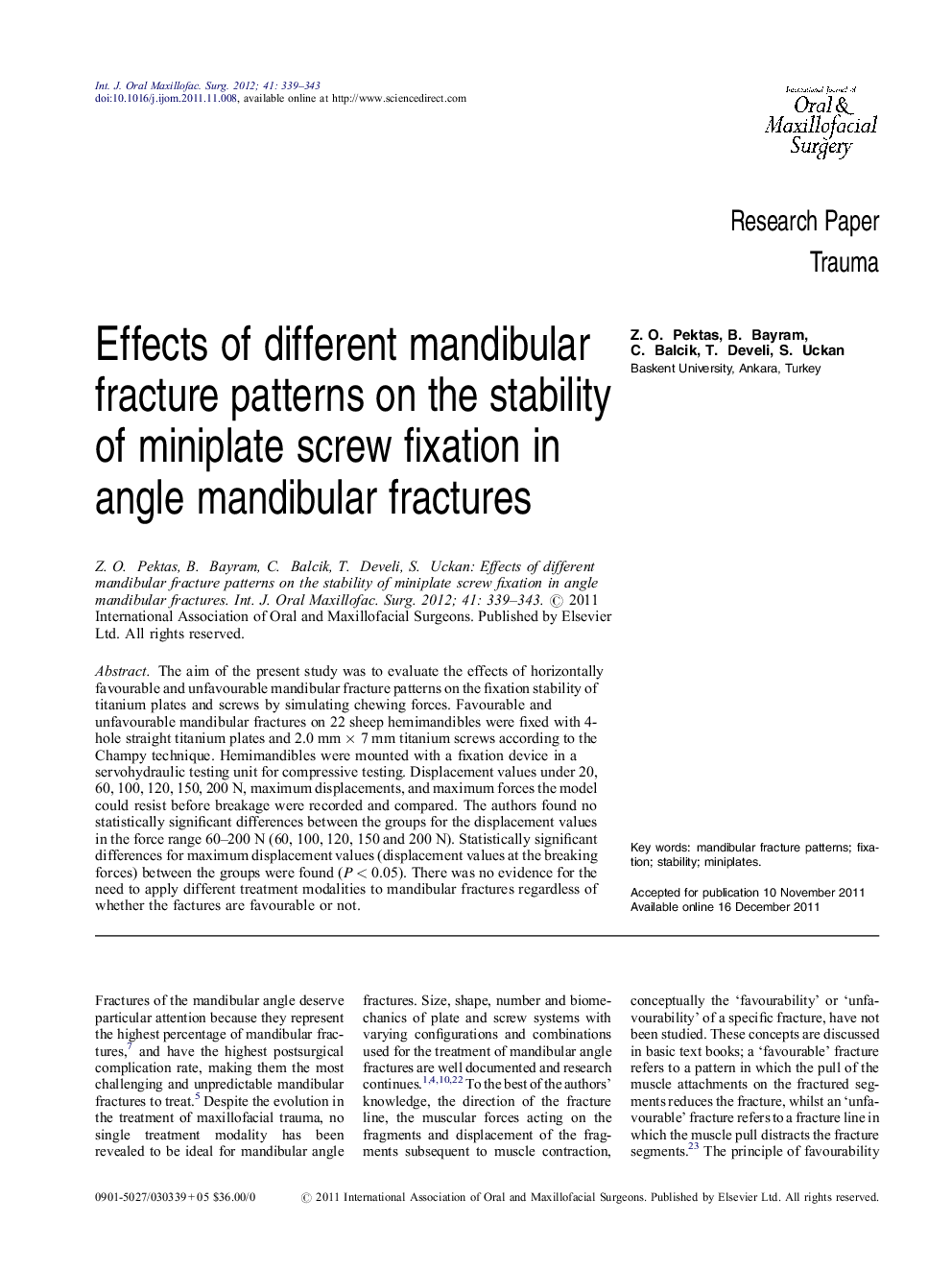| Article ID | Journal | Published Year | Pages | File Type |
|---|---|---|---|---|
| 3133141 | International Journal of Oral and Maxillofacial Surgery | 2012 | 5 Pages |
The aim of the present study was to evaluate the effects of horizontally favourable and unfavourable mandibular fracture patterns on the fixation stability of titanium plates and screws by simulating chewing forces. Favourable and unfavourable mandibular fractures on 22 sheep hemimandibles were fixed with 4-hole straight titanium plates and 2.0 mm × 7 mm titanium screws according to the Champy technique. Hemimandibles were mounted with a fixation device in a servohydraulic testing unit for compressive testing. Displacement values under 20, 60, 100, 120, 150, 200 N, maximum displacements, and maximum forces the model could resist before breakage were recorded and compared. The authors found no statistically significant differences between the groups for the displacement values in the force range 60–200 N (60, 100, 120, 150 and 200 N). Statistically significant differences for maximum displacement values (displacement values at the breaking forces) between the groups were found (P < 0.05). There was no evidence for the need to apply different treatment modalities to mandibular fractures regardless of whether the factures are favourable or not.
